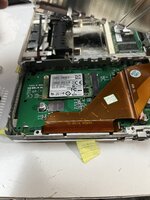jdcurry
Well-known member
I recently upgraded an iBook using a mSATA to IDE adapter I got off amazon. (I think the same one as mdeverhart mentioned) The only reason I used mSATA vs. M.2 (or other/ newer technology) was because I have a small stock of mSATA drives being unused. The adapter has held up for the past few months. I think if it does eventually fail I might switch to an M.2 adapter or something else.
This is the adapter I used: https://www.amazon.com/gp/product/B01GRMUQRG/
This is the adapter I used: https://www.amazon.com/gp/product/B01GRMUQRG/

